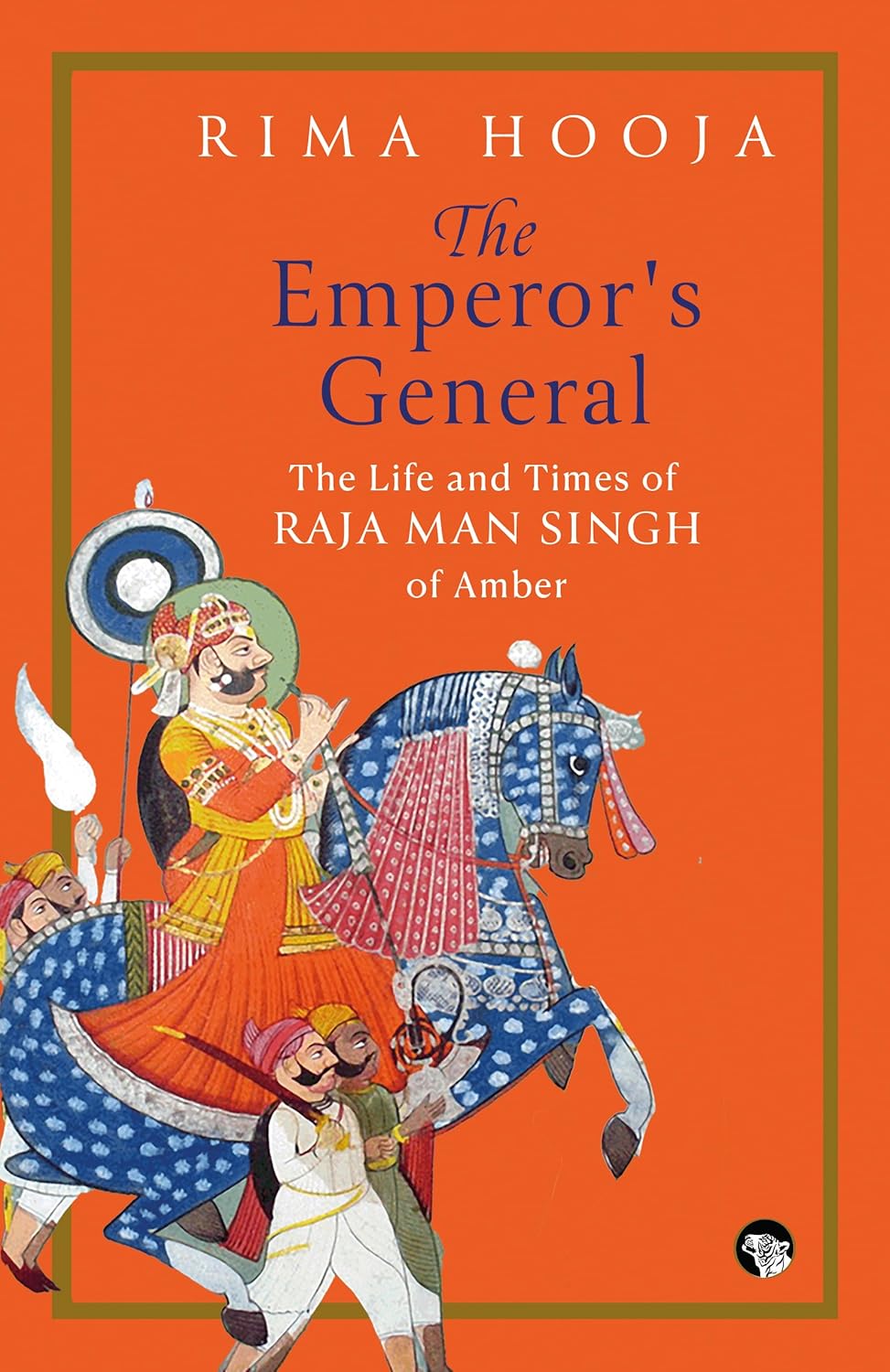Over the past decade or so, Indian popular history publishing has seen a welcome trend. After a run of strong biographies on the great Mughal emperors, writers have begun to explore the lives of secondary figures, from the formidable empress Nur Jahan and the powerful princess Jahanara to the philosopher-prince Dara Shukoh and the chronicler-princess Gulbadan. It seems a natural progression, then, to move on to the senior, non-Mughal figures who were indispensable to the empire’s success. Rima Hooja’s The Emperor’s General is a prime example, a deeply-researched biography of a man who was, arguably, more central to the empire’s consolidation than any single imperial prince.
But who was Raja Man Singh? A pivotal statesman-warrior of 16th- and early 17th-century India, Man Singh (1550–1614) was the Kachhwaha ruler of Amber (near modern-day Jaipur) and, most famously, Emperor Akbar’s most trusted general and governor. He was also Akbar’s “nephew-son” (Farzand), who entered imperial service at age twelve and rose to a rank (mansab) unsurpassed by any non-imperial family member.
For many in India, however, Man Singh’s legacy is deeply contested. He is often trapped in a historiographical bind: either dismissed by some as a mere vassal and a “Hindu collaborator” with the Mughal “invaders”, or, for his role in the Battle of Haldighati against Maharana Pratap, vilified by others as a traitor to the cause of Rajput independence. Hooja’s central argument is that Man Singh was neither. She seeks to “restore” him from this reductive, centuries-old binary to his proper place as a pan-Indian grandee and a primary architect of the Mughal enterprise in his own right.
Man Singh was a core part of the imperial decision-making process.
Hooja portrays the relationship between the Kachhwahas and the Mughal court with considerable nuance, moving beyond a simple model of vassalage to explore the mutual dependence that defined the bond. Man Singh embodied this alliance. As Hooja writes:
Alongside a vigorous expansion of imperial frontiers evolved Akbar’s ‘Rajput policy’, as later historians have labelled it. This policy offered friendship sealed by marriage and an acceptance of Mughal sovereignty, rewarded with land and honours; the alternative was to face the might of a Mughal army.
Man Singh’s role as one of Akbar’s celebrated Navratnas (Nine Jewels) further illustrates this integration. Hooja’s narrative shows this was no mere honorific. Man Singh was a polyglot and a man of letters who served as a critical statesman and diplomat. He was not just a general dispatched to remote frontiers; he was a core part of the imperial decision-making process, a trusted advisor whose Kachhwaha interests were now deeply intertwined with the stability of the Mughal throne.
Where Hooja’s analysis shines is in detailing Man Singh’s role as a true architect of empire, far beyond his famous command at Haldighati. His career spanned over sixty-seven major campaigns, and Hooja meticulously chronicles how he secured the empire’s frontiers. On the formidable northwestern frontier, his campaigns in Kabul pacified the empire’s most volatile border, securing vital trade routes. The Kachhwaha adoption of the five-colored Panchranga flag, representing five defeated Afghan tribes, is a noteworthy symbol of this success.
His legacy in the eastern provinces was just as significant. As Governor (Subedar) of Bihar, he subdued recalcitrant chieftains and established imperial order. In Bengal and Orissa, he faced a chaotic environment of Afghan rebels and powerful local rulers. Hooja reveals his founding of the new capital Akbarnagar (Rajmahal) as an act of brilliant strategic foresight—a deliberate piece of imperial architecture designed to be a defensible administrative hub on the shifting banks of the Ganga, cementing Mughal authority over the wealthy but rebellious region. In each post, Man Singh was not just a conqueror; he was an administrator who established revenue systems and a loyal local aristocracy.
Hooja furthermore gives equal weight to his extensive cultural patronage, portraying it as another arm of statecraft. His commissioning of the magnificent Govind Dev Ji temple at Vrindavan, built in red sandstone, was a powerful expression of this dual loyalty. On one hand, he acted as a Mughal governor, using imperial resources to patronize a key religious center, thereby extending Mughal influence. On the other hand, he used his position as a preeminent Hindu noble to project his own clan’s religious and cultural authority, cementing Rajput prestige within the empire.
The Emperor’s General successfully restores Raja Man Singh to his central role in Mughal history.
Throughout, Hooja balances narrative momentum with factual density. The book is an exhaustive chronicle of political and military history, demonstrating an impressive command of Persian and Rajasthani sources. But this reliance on authenticated documentation also shapes the narrative. Hooja rightly dismisses compelling but dramatic anecdotes—such as the Udaisagar quarrel between Man Singh and Rana Pratap—as historically unlikely legends because they are absent from contemporary records. This rigorous, fact-based approach, which sets the book apart from earlier works like RN Prasad’s 1966 Raja Man Singh of Amber and Colonel Tod’s Annals and Antiquities of Rajasthan, means the narrative must occasionally employ measured speculation where military records are scant.
Rima Hooja’s The Emperor’s General successfully restores Raja Man Singh to his central role in Mughal history. By integrating vast factual findings into a comprehensive and accessible narrative, Hooja has produced the definitive modern account of a man who was, in every sense, a statesman, a warrior, and a core architect of the empire. As she concludes, he “transcended his own century and left an indelible mark on time itself.”

